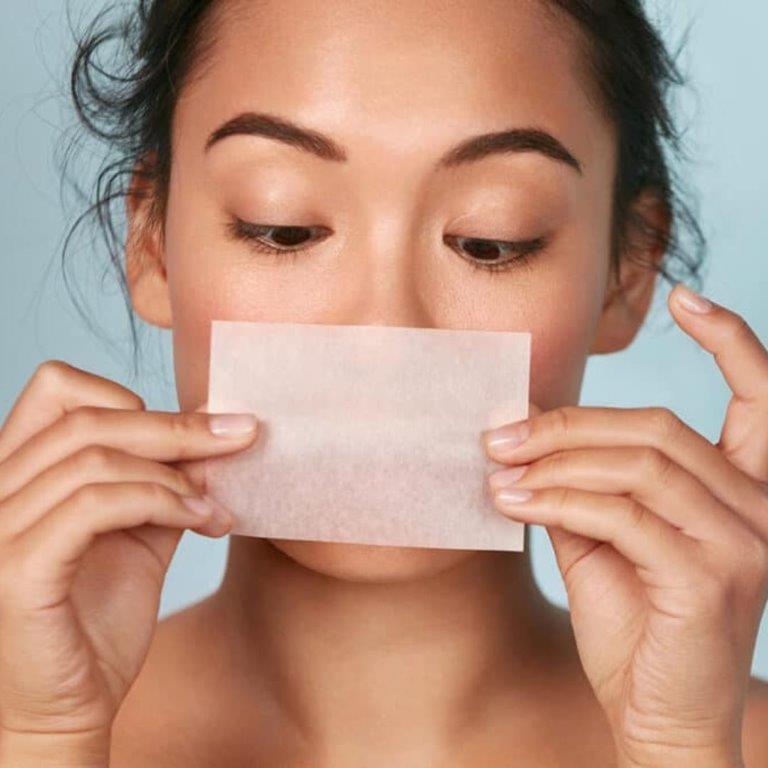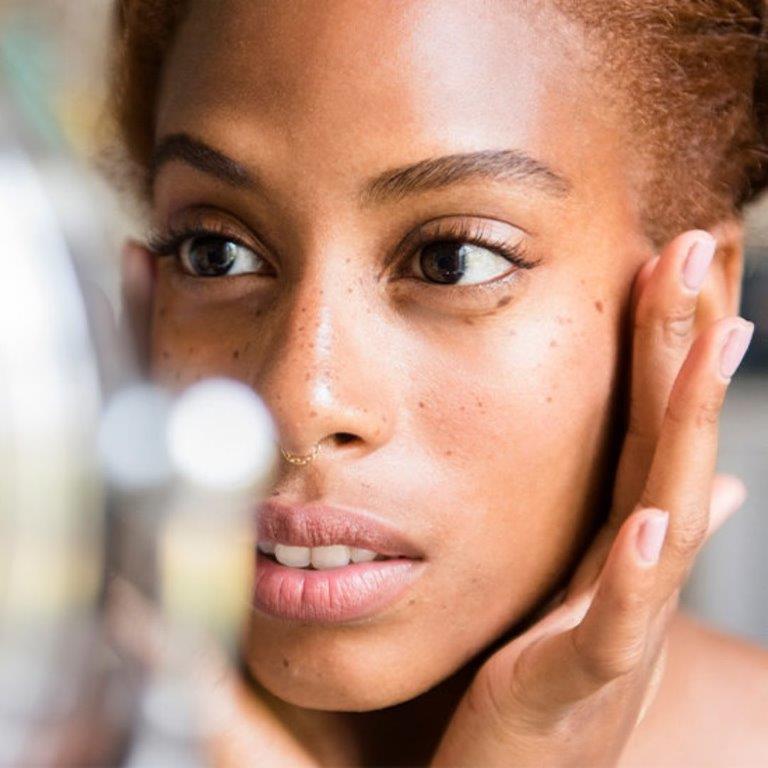Do a Skin type test Now: Know the Best Skin Treatment for Your Skin Type

Daily cleansing and moisturizing are beneficial for all skin types. Still, different types of skin, such as dry, oily, normal, combination, and sensitive skin, have varied needs. The first step in giving your skin the correct care is identifying what kind it is. However, how can you tell what type of skin you have?
This article provides simple skin type tests and skincare routine steps to help you identify your specific skin type and choose the right products.
Skin Type Test

Identifying your skin type will help you develop the ideal daily skincare routine for glowing skin. You can then choose products for your skin that will benefit it rather than harm it.
1. Day Skin Type Test
The simplest way to figure out your skin type is to observe how it behaves on an average day from sunrise to evening.
Skin type: oily skin.
Results: Your face feels oily and appears shiny.
Skin type: combination skin.
Results: Most of your face is matte, except your T-zone, which shines.
Skin type: normal skin.
Results: You have little oil, flakiness, redness, or none of these symptoms.
Skin type: dry skin.
Results: Your skin is tight or flaky.
Skin type: sensitive skin.
Results: Your skin is itchy, red, or inflamed.
Dehydrated skin is a distinct disorder rather than a skin type. Dehydrated skin can be oily, a combination, or a mixture of those above.
Only use this information as a guide. If you have specific skin issues, ensure to consult a physician or doctor.
2. Wash Skin Type Test (Watch and Wait)
You can do this at-home skin type test to determine your skin type by examining how your skin responds to cleansing.
Start by washing your face with a gentle cleanser without using makeup or products. After it has dried for 30 minutes, check how your skin feels.
You probably have oily skin if it seems glossy all over.
You probably have dry skin if it is flaky or scaly, feels tight, or both.
If your T-zone is the sole area that shines, you most likely have combination skin.
You probably have normal skin if it feels moisturized, pleasant, and non-oily.
When your face is relatively calm—that is, when it isn't red hot from a run, stinging from a fruit enzyme peel, or feeling tight—you can try this test.
3. The Blotting Sheet Test
Blotting sheets absorb oil when placed on the skin, and you can use them to determine your skin type and daily skincare routine for glowing skin.
Wait 30 minutes after washing your skin with a mild cleanser and patting it dry.
Hold the blotting sheets up to the light to view the oil stains after pressing the sheets to various parts of your face.
You have oily skin if the sheets absorb a lot of oil from every part of your face.
You most likely have dry skin if they barely absorb any oil.
You have combination skin if only a modest amount of T-zone oil is visible on the sheets.
You most likely have normal skin if barely any oil comes from any area of your face.
4. Picture Skin Type Test
A physician may be able to further assess the behavior of your skin using specific photographic skin type test.
Vascular filters can focus on an abnormal or overabundance of blood vessels, a sign of sensitive, inflamed, or irritated skin. UV-like filters can show skin pigmentation and damage from the sun. Other techniques can point out minute variations in skin structure or pore size or even show when there is oil production.
Note: Over time, your skin type may change.
Your skin type might change due to pregnancy, food, environment, and other variables. Understanding your skin is the greatest approach to examining it. That entails a skin type test to determine the warmth, texture, and buoyancy by touching it with clean hands. You can assess its hydration levels by periodically performing a mild pinch test.
Once you identify your skin type, you can arm yourself with products and a daily skincare routine for glowing skin that will help you deal with the specifics of your skin.
Five Types of Skin

Your skin type is crucial in figuring out which skincare products and skincare routine steps will be effective for you. There are generally no terrible skincare products; however, people with different skin kinds occasionally use the incorrect product for their skin type.
Extreme caution should be taken while using different skincare products on those with sensitive and acne-prone skin. On the other side, oily skin can tolerate a larger variety of substances than other skin types, which can occasionally cause breakouts or irritation.
There are a few basics about your skin that you should know before you think about purchasing any over-the-counter skin care products.
1. Dry Skin Type Characteristics
Natural oil production in dry skin is typically lower than on other skin types. This could make it look dull and feel rough, flaky, or even scaly. Frequent tight or elastic feel, dehydration, and vulnerability to fine wrinkles are obvious dry skin type characteristics. Additionally, it might itch or bother you.
Ceramides, for example, are gentle, soothing, and moisturizing skin care components that maintain the skin's natural moisture barrier. Get products with lactic acid and shea butter for your daily skincare routine for glowing skin. These ingredients hydrate and gently exfoliate dry skin to keep it looking beautiful.
2. Oily Skin Type
Sebum produced in excess by oily skin makes the skin feel greasy and seem glossy, especially in the T-zone (forehead, nose, and chin). As a result, oily-skinned individuals may have fewer wrinkles than those with dry skin. Still, they may also be especially prone to enlarged pores, acne scars, blackheads, and whiteheads.
Remember that when oily skin releases more natural oils, it still needs to be moisturized just as much as other skin types. The key to supporting oily skin is picking the correct products that moisturize and nourish without blocking pores or causing outbreaks. A gentle, foamy cleanser that is efficient in removing debris, extra oil, and other pollutants should be a part of the ideal oily skin routine. It should also contain a lightweight moisturizer that is non-comedogenic, oil-free and gives your oily skin the vital hydration it requires.
Choose products that contain hyaluronic acid, benzoyl peroxide, and alpha hydroxy acids (salicylic or glycolic). These ingredients efficiently reduce excessive sebum production, while hyaluronic acid will hydrate the areas that require it.
3. Combination Skin Type
Combination skin has dry and oily patches, with the T-zone typically being oily and the cheeks either normal or dry. Due to various variables, including stress and hormone fluctuations, this skin type can change throughout the year and over different seasons.
Combination skins do not have any specific moisturizers. Finding what works for you is the solution. To maintain your skin healthy and happy, you must alternate between different products on different days or times. Alternately, intensify spot therapy by applying one product to your cheekbones and another to your T-zone. You can use a toner for balancing, a mild enzyme mask to exfoliate, and a roll-on containing tea tree oil to treat acne-prone spots.
4. Sensitive Skin Type
Although sensitive skin is frequently referred to as a skin type, it can also be oily, dry, or normal sensitive skin. If you have sensitive skin, it may seem red and feel dry, itchy, or burning. These symptoms may be brought on by certain substances, such as dyes or fragrances, as well as environmental factors.
If you have sensitive skin, you can identify the components and products that make you more sensitive and avoid using them. To lessen your exposure to triggers, you can also change your surroundings.
Choose products with shea butter, oats, and aloe vera. They are effective moisturizers and typically cause no breakouts.
A visit to the aesthetic physician to get a diagnosis is worthwhile if you're unsure of your skin type. Once you know your skin type, you may begin making more informed product choices.
5. Normal Skin Type
Skin that is balanced feels neither dry nor overly greasy. It does not break out easily, flake, or feel tight or greasy. Normal-skinned people often have small pores and smooth skin that are less sensitive or prone to blemishes.
Normal skin has no particular problems or worries, but it still needs the right treatment to look and feel its best. By retaining moisture and strengthening your skin's natural barrier, the optimum normal skin routine keeps your skin hydrated.
Make sure your skincare routine steps include decent sunscreen and a nighttime product with a retinoid, though. Your skin may sometimes experience a dry, oily, sensitive, or combination spell with the passing of the seasons and various other factors.
Conclusion
Although those with normal skin are less likely to suffer skin issues, it's vital to remember that any skin type can be sensitive or vulnerable to acne outbreaks. But you can take care of your skin while treating irritation and acne scars with the correct products.
With the information provided in this article, you can carefully browse skin care products to choose those ideal for your skin type. When in doubt, seek an aesthetic physician for advice on the optimal skincare regimen for your skin type and a personalized skin examination or skin care for teenagers.
